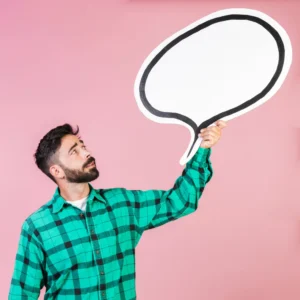Have you ever sent a simple 👍 in a chat and worried that it might have been taken the wrong way? You’re not alone. While the thumbs up emoji once felt like a universal sign of agreement or approval, many now see it as dismissive, passive-aggressive, or even outdated. In fact, I first noticed this cultural shift while managing a group project at university: every time one of my teammates replied with just a thumbs up, the rest of us weren’t sure if he was genuinely agreeing or quietly annoyed. That tiny emoji carried far more weight than expected.
So, what can you use instead of the thumbs up emoji to make sure your digital tone matches your intent? Let’s dive into meaningful, modern, and context-aware alternatives.
Why the Thumbs Up Emoji Feels Tricky
The thumbs up emoji was once the go-to for agreement. But its meaning is evolving depending on age, culture, and context.
- Generational differences: A 2022 Workplace Communication Report found that younger workers often interpret 👍 as curt or dismissive, while older colleagues see it as a quick acknowledgment.
- Cultural nuance: In some cultures, the thumbs up can be considered rude or offensive, making it unsuitable for international teams.
- Tone ambiguity: Without facial expressions or tone of voice, 👍 can look like you’re brushing someone off rather than engaging.
Communication coach Dr. Deborah Tannen points out that “digital shorthand often carries unintended emotional weight.” That’s why it’s essential to pick alternatives that better capture your intent.
Better Alternatives to the Thumbs Up Emoji
1. Words Instead of Emojis
Sometimes the simplest solution is ditching emojis altogether.
- Instead of 👍 → Say “Sounds good!”, “Great idea!”, or “I’m on it.”
- Why it works: Words remove ambiguity. They show you’ve taken a moment to respond thoughtfully rather than just tapping an icon.
I’ve personally found that using words in professional emails or Slack threads makes colleagues more receptive. It leaves less room for misinterpretation.
2. The Smiley 😊 or Smiling Face with Halo 😇
If you want to keep things light and positive, a smiley emoji feels warmer and more approachable.
- When to use: Friendly chats, casual approvals, or social media replies.
- Why it works: Smiling emojis communicate friendliness without the sharp edge that 👍 can carry.
3. The Raised Hands 🙌
This emoji is like saying “Yes!” or “That’s brilliant!”
- When to use: Celebrating team wins, endorsing an idea, or showing excitement.
- Real-world use: I often use 🙌 in my freelance groups when someone shares a win—it encourages positivity and teamwork.
4. The Checkmark ✅
When you need clear acknowledgment, ✅ can be a professional alternative.
- When to use: Workplace approvals, confirming tasks, project updates.
- Why it works: It’s direct, efficient, and universally understood as “approved” or “completed.”
According to a 2023 workplace survey by Asana, teams using checkmarks for task confirmations reported fewer misunderstandings than those relying on 👍.
5. The Clapping Hands 👏
Want to show appreciation instead of mere agreement?
- When to use: Recognising someone’s contribution, cheering for progress.
- Why it works: It conveys genuine enthusiasm and avoids the coldness of 👍.
6. The Heart ❤️ or Heart Eyes 😍
If your intent is warmth, encouragement, or personal connection, the heart emoji is a stronger choice.
- When to use: Supporting friends, showing gratitude, or adding kindness in conversations.
- Why it works: It communicates emotional depth that a thumbs up never can.
Want to master every emoji?
Get the 3500+ Emoji Meanings Guide — Contains the meanings of all the emojis used in texting.
👉 Download it here
How to Choose the Right Alternative
Not all situations call for the same replacement. Here are a few guiding principles:
- Professional vs. Casual: In the workplace, ✅ or a short phrase (“Understood”) works best. In personal chats, ❤️ or 🙌 feels more natural.
- Cultural Awareness: If you’re messaging across cultures, stick to neutral, text-based responses to avoid confusion.
- Clarity First: Ask yourself, “Could this emoji be misread?” If yes, replace it with words.
Communication expert Sherry Turkle reminds us: “Technology doesn’t replace conversation; it reshapes it.” Your emoji choice is part of that reshaping.
FAQs
Q: Is it rude to use the thumbs up emoji at work?
Not always. Some teams see it as efficient. But if colleagues are younger or international, it might be safer to use ✅ or a short text reply.
Q: What’s the most professional emoji to use instead of 👍?
The ✅ checkmark. It’s clear, neutral, and unlikely to offend.
Q: What if I still like using 👍?
You can, but add context. For example: “👍 Thanks for handling this!” This softens the tone.
Final Thoughts
The thumbs up emoji isn’t disappearing, but its meaning is shifting. By choosing alternatives—whether a warm 😊, a clear ✅, or simply typed words—you can make sure your digital tone matches your intent.
I’d love to know: do you still use the thumbs up emoji, or have you swapped it for something else? Share your favourite alternatives in the comments—I might just adopt them myself!
Read Also: How to Tell HR You Haven’t Been Paid (Without Starting a Fight)
Key Takeaways
- 👍 can come across as curt or dismissive.
- Use ✅ for clarity in professional settings.
- Use 🙌 or 👏 for positivity and celebration.
- Words often remove ambiguity better than emojis.
- Context and audience should guide your choice.
Your Turn: Try replacing your next 👍 with a more thoughtful response. Did it change how the other person reacted? Let me know!





An attention-grabbing dialogue is value comment. I feel that you must write extra on this topic, it won’t be a taboo subject but typically people are not enough to speak on such topics. To the next. Cheers